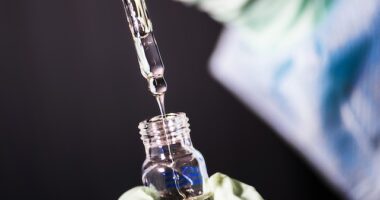Pathways Alliance Commits Major Producers to Net-Zero by 2050
The Pathways Alliance consists of six oil companies collectively responsible for 95% Canada’s oil sands production. The group recently launched an initiative to achieve net zero emissions from their operations by 2050. It’s a heavy lift to get there, considering the prolific area in northern Alberta currently emits roughly 70 megatonnes of CO2 per year (according to the Alberta government) and is Alberta’s leading source of emissions. While the companies are pledged to act on their own, Alberta is instituting a 100 megatonne/year limit with levies designed to incentivize more efficient operations in the quest to reduce emissions.
All of the organizations involved recognize the need for technological innovation if emissions are to be reduced. Pathways is pursuing a $16.5 billion (all figures Canadian dollars unless otherwise noted) carbon capture and storage facility that could go a long way to achieving its goals, but that alone is not enough. Pathways is committing an additional $7.6 billion to investing in other emissions reductions projects and technologies.
This is where an innovator like Aduro Clean Technologies, Inc. (CSE: ACT) (OTCQB: ACTHF) (FSE: 9D50) comes into play. Aduro has developed a patented water-based technology, the Hydrochemolytic™ (or HCT) platform, capable of upgrading the very heavy crude found in the oil sands into lighter crude that can be transported through pipelines. HCT has several major advantages over current technologies, including decreased emissions.
Bitumen Too Heavy to Transport
Crude from the oil sands is unusually heavy compared to other sources of oil, requiring much more processing and refinement to make it transportable and usable. The main product is called bitumen, and without the processing it can be used for road surfaces and roofing (at that point it is more commonly known as tar or asphalt). The asphaltenes in bitumen need to be removed to upgrade it into synthetic crude oil (SCO) suitable for pipeline transport, and this process with current technologies results in very high levels of CO2 emissions compared to the emissions necessary to process other common types of crude oil.
Source: Pembina.Org
To make it into the lighter SCO, bitumen can be upgraded by either removing carbon or adding hydrogen. Carbon is removed by coking – high temperatures are applied to bitumen to crack it into lighter oils and natural gas liquids while also creating a solid, carbon-rich byproduct called coke. Coking units can cost in the $500 million to $1 billion range to build.
Hydrogen is added through hydroconversion, an upgrading process where the bitumen is cracked and combined with hydrogen in the presence of a catalyst, such as platinum, at high pressures. As hydrogen is added to the bitumen, with no carbon rejection, the volume of synthetic crude oil produced from hydroconversion could be equal or more than the volume of bitumen consumed during the process. Hydroconversion is both more expensive and more complex than coking while producing higher yields.
In 2020, there were four active upgraders in Alberta and two nearby in Saskatchewan. These facilities processed 42% of the 3 million barrels/day of Alberta bitumen produced that year, yielding 1.1 million barrels/day of SCO. The economics of building and expanding upgrading facilities have become increasingly problematic, and oil sand production is still on the upswing. The oil sands producers need more upgrading capacity, and they need to find a way to reduce emissions in order to meet their goals. As noted above, they have earmarked over $7 billion for the effort.
Aduro’s Solution
Aduro’s Hydrochemolyitc™ platform may be just the answer the industry is looking for. The system offers several advantages over current coking and hydroconversion approaches. The technology is highly scalable and significantly less expensive to build. It also operates at a lower temperature, with lower energy needs, while greatly reducing the need for dilutive hydrocarbon substances in the upgrading process. HCT processing also results in greatly reduced emissions, making the oil produced ‘greener’ than that created by conventional methods. It can even be applied to the lowest grade bitumen left over from these conventional methods in refineries, essentially turning waste into a much higher value and usable oil.
The upgraded crude has superior properties compared with the common Western Canadian Select variety of crude, including reduced values for density, viscosity, sulfur, metals, and acid number. Reduced viscosity means that little or no dilution by light hydrocarbons is required for pipeline transport. Compared with alternative upgrading technologies, the reduced emissions and low resource demands of HBU give environmental and competitive advantages to Albertan oil producers.
Aduro is in the midst of commercializing its technology, having built a customer demonstration unit capable of showing the system’s capabilities to potential clients like the Pathways oil companies. With these companies committed to buying and implementing better technologies that produce fewer emissions (to the tune of $7+ billion), Aduro’s timing appears to be fortuitous. Keep an eye out for further developments.







